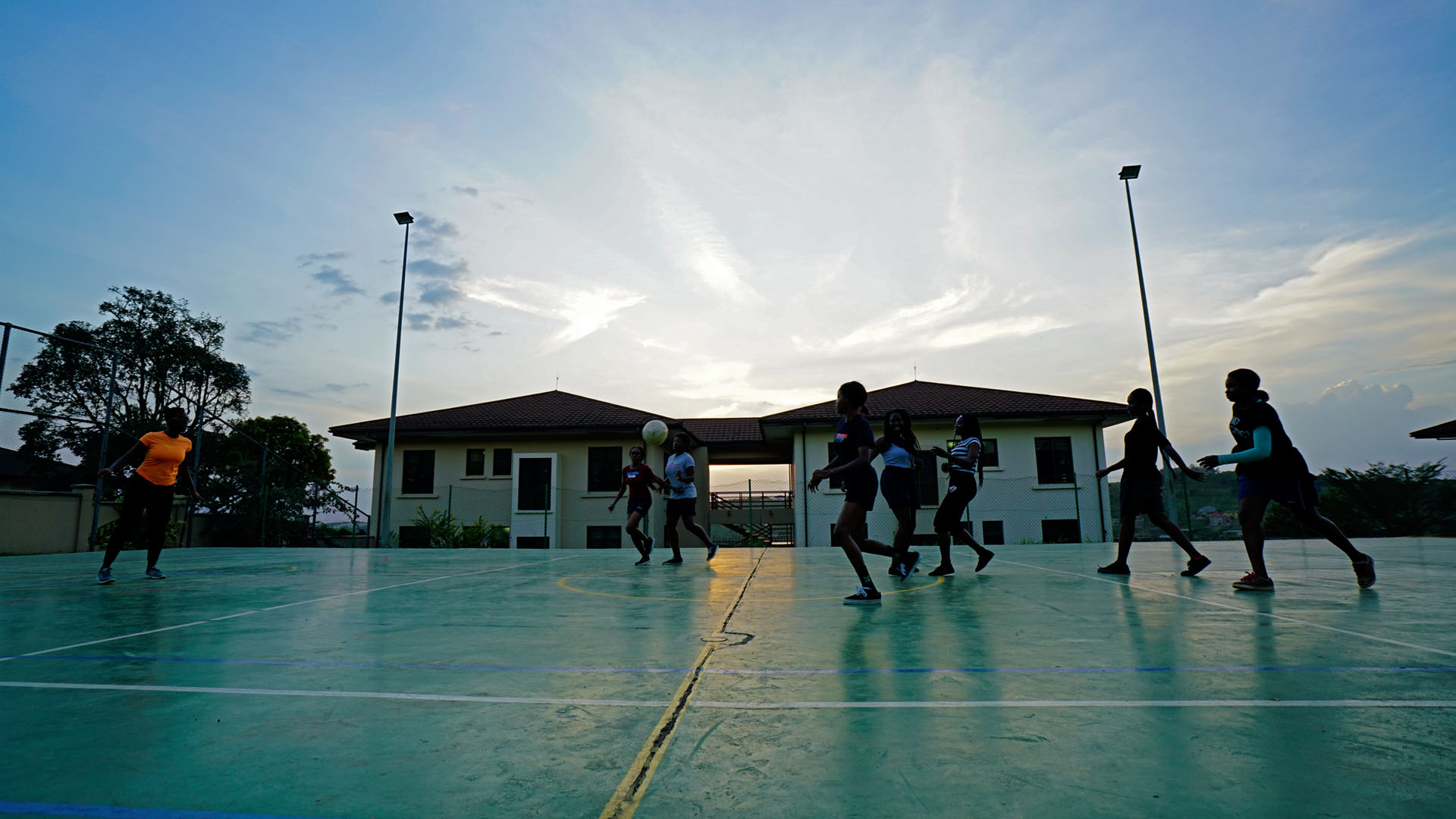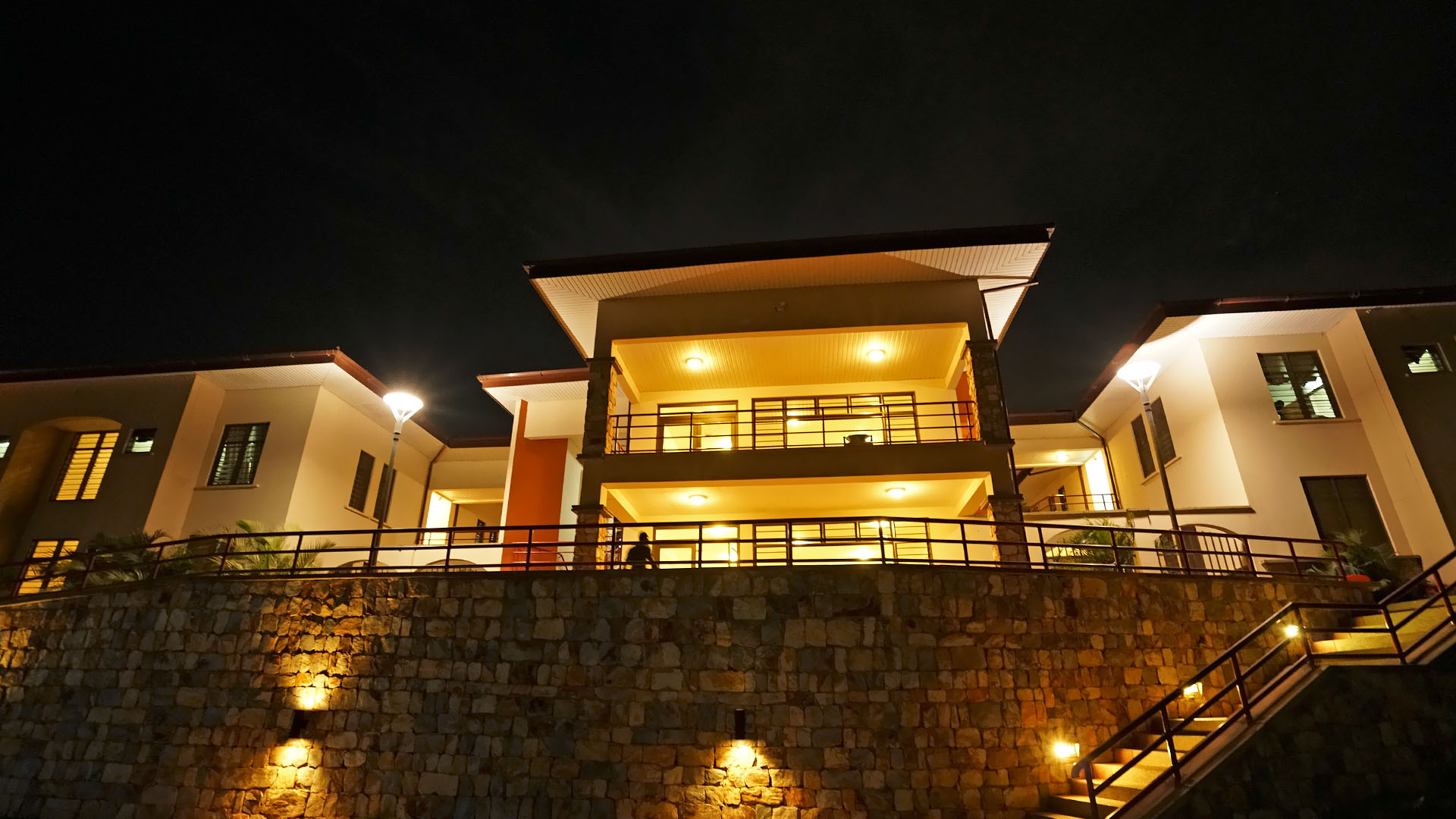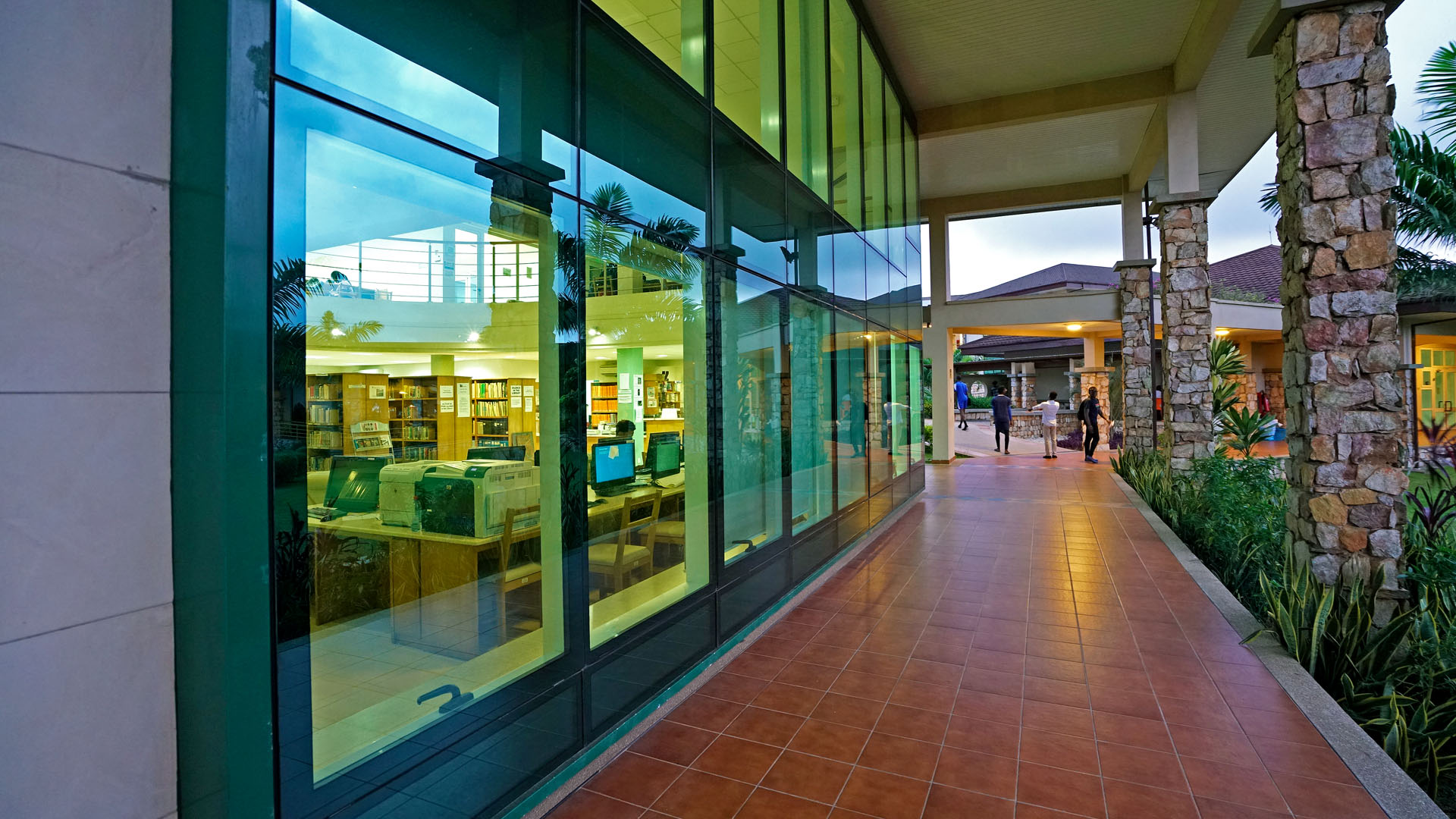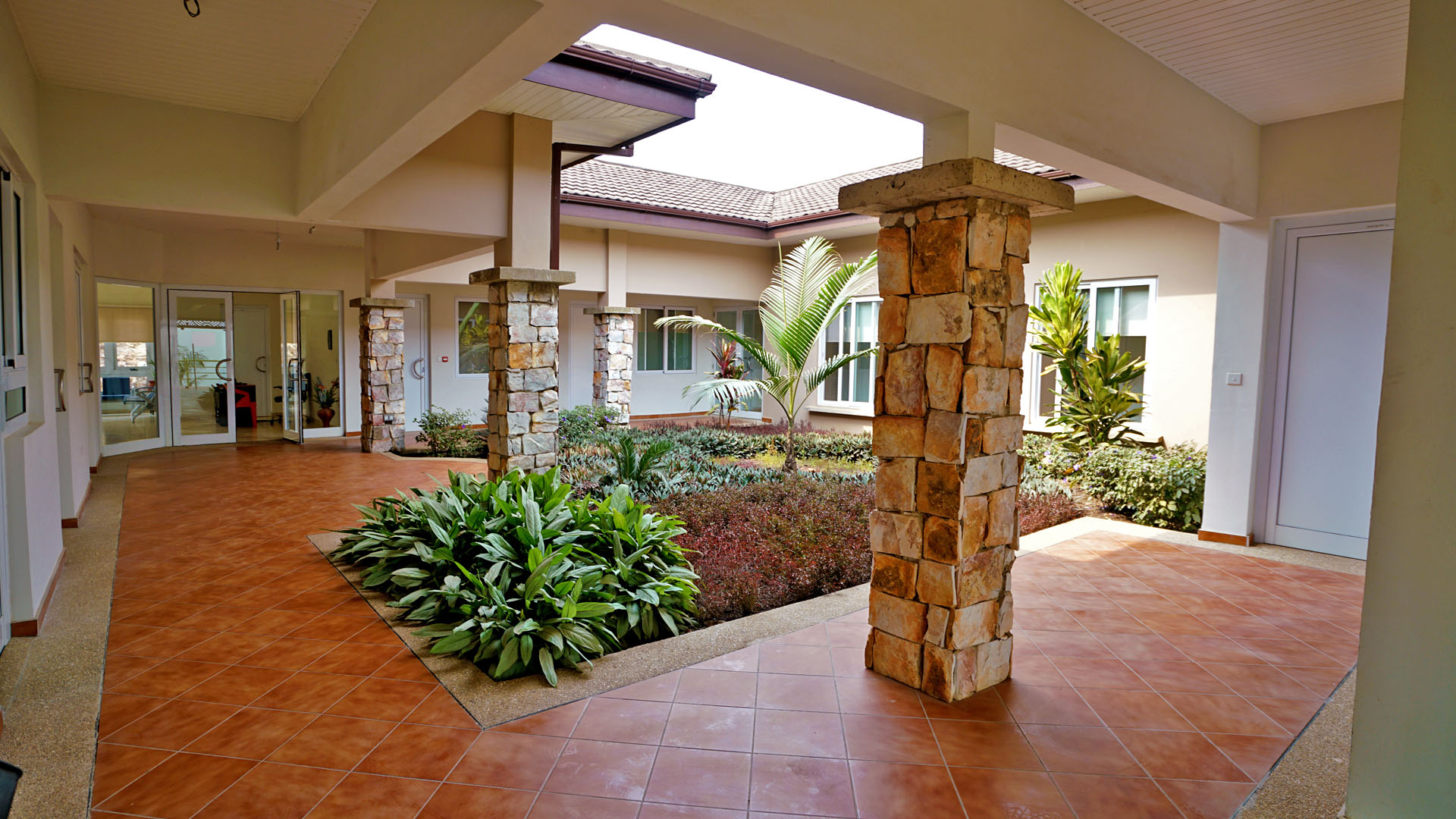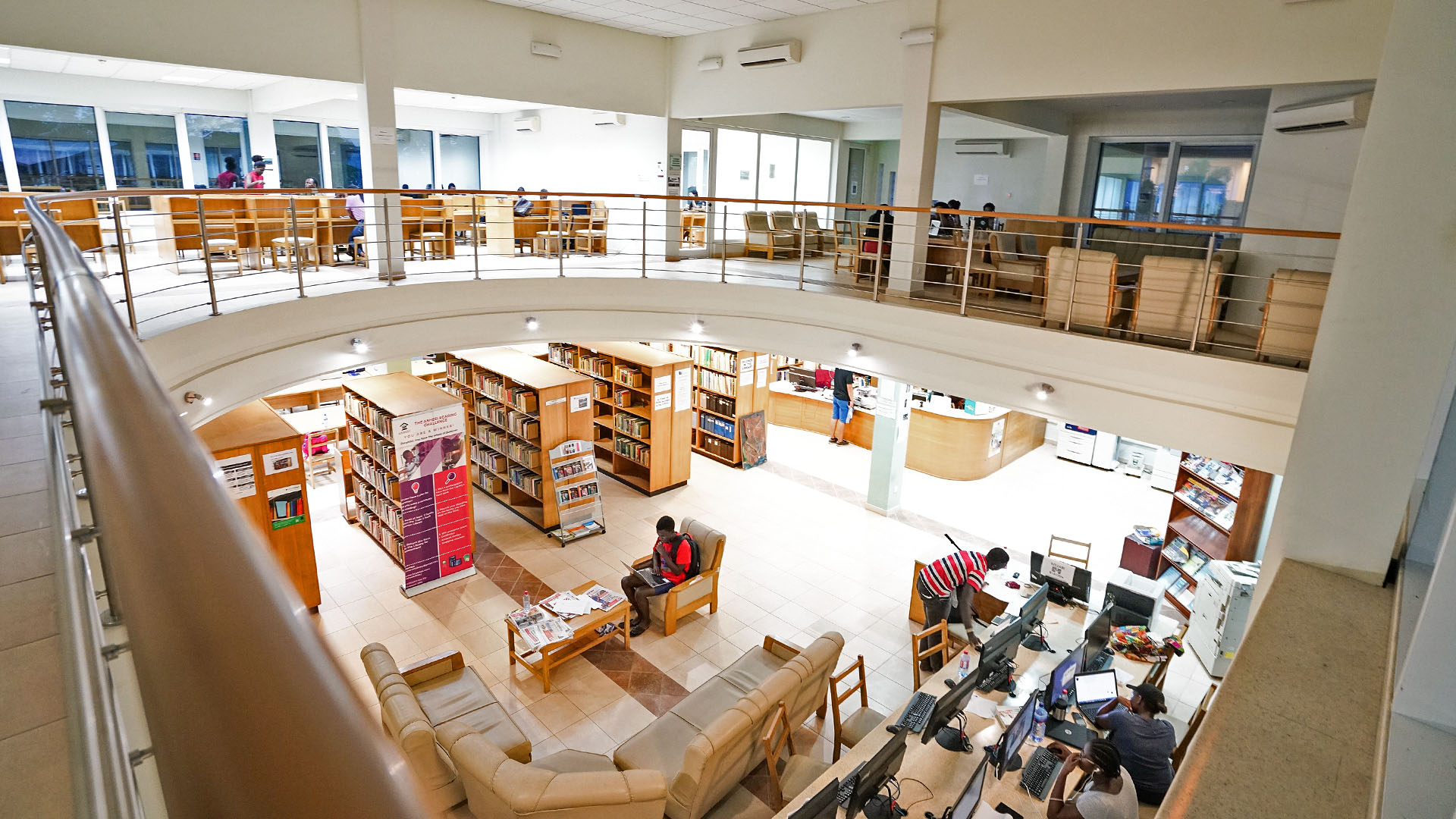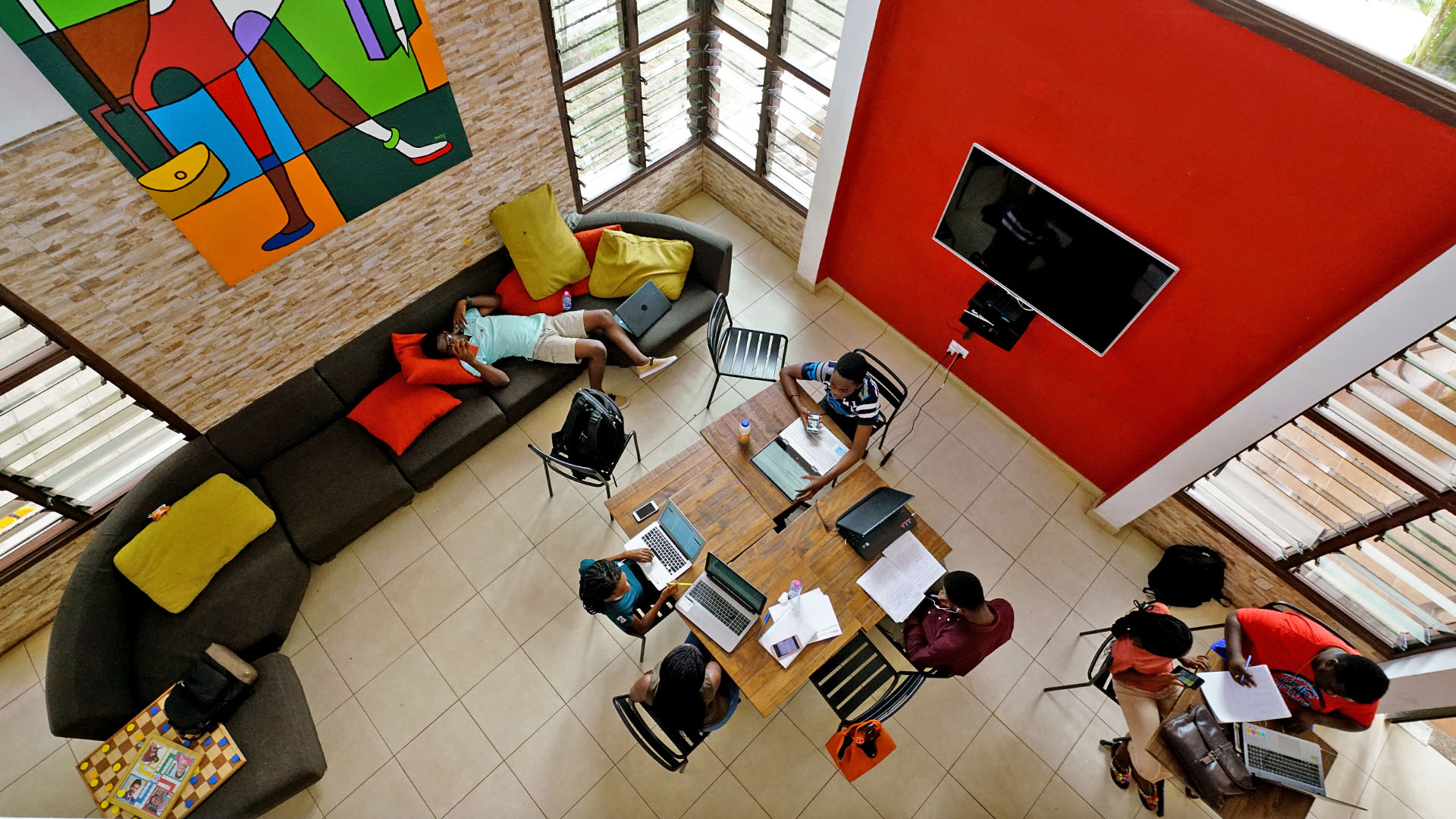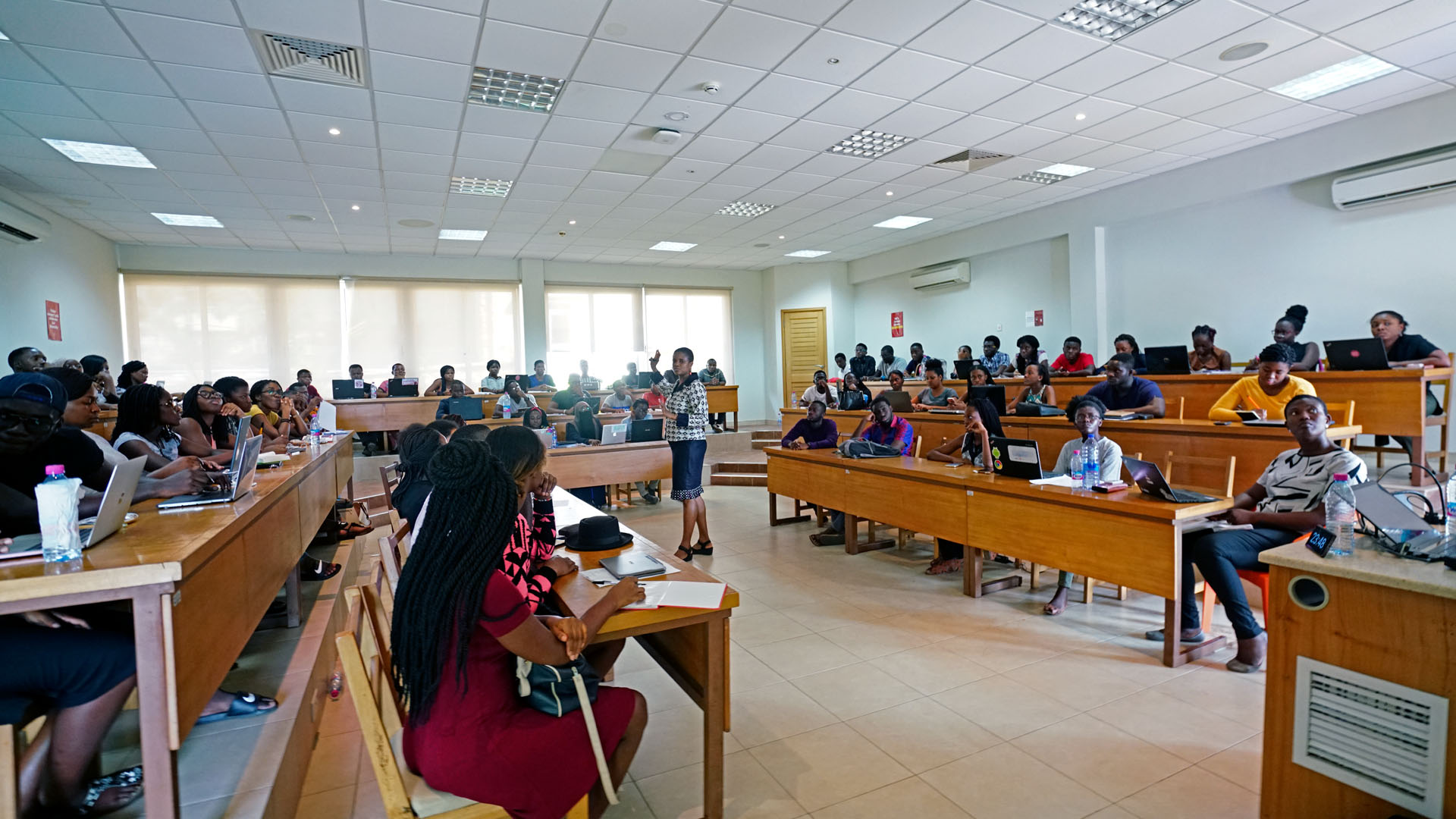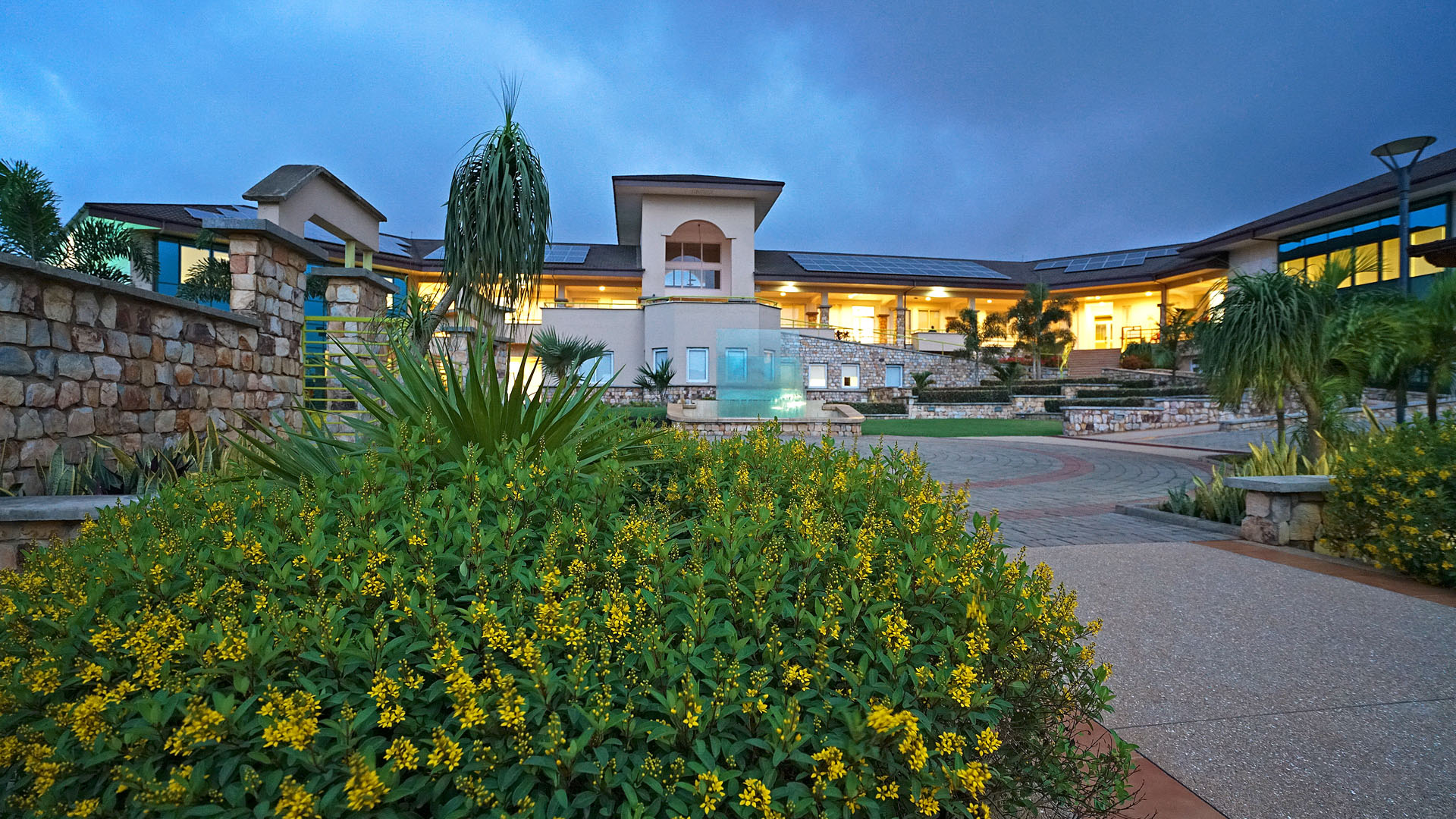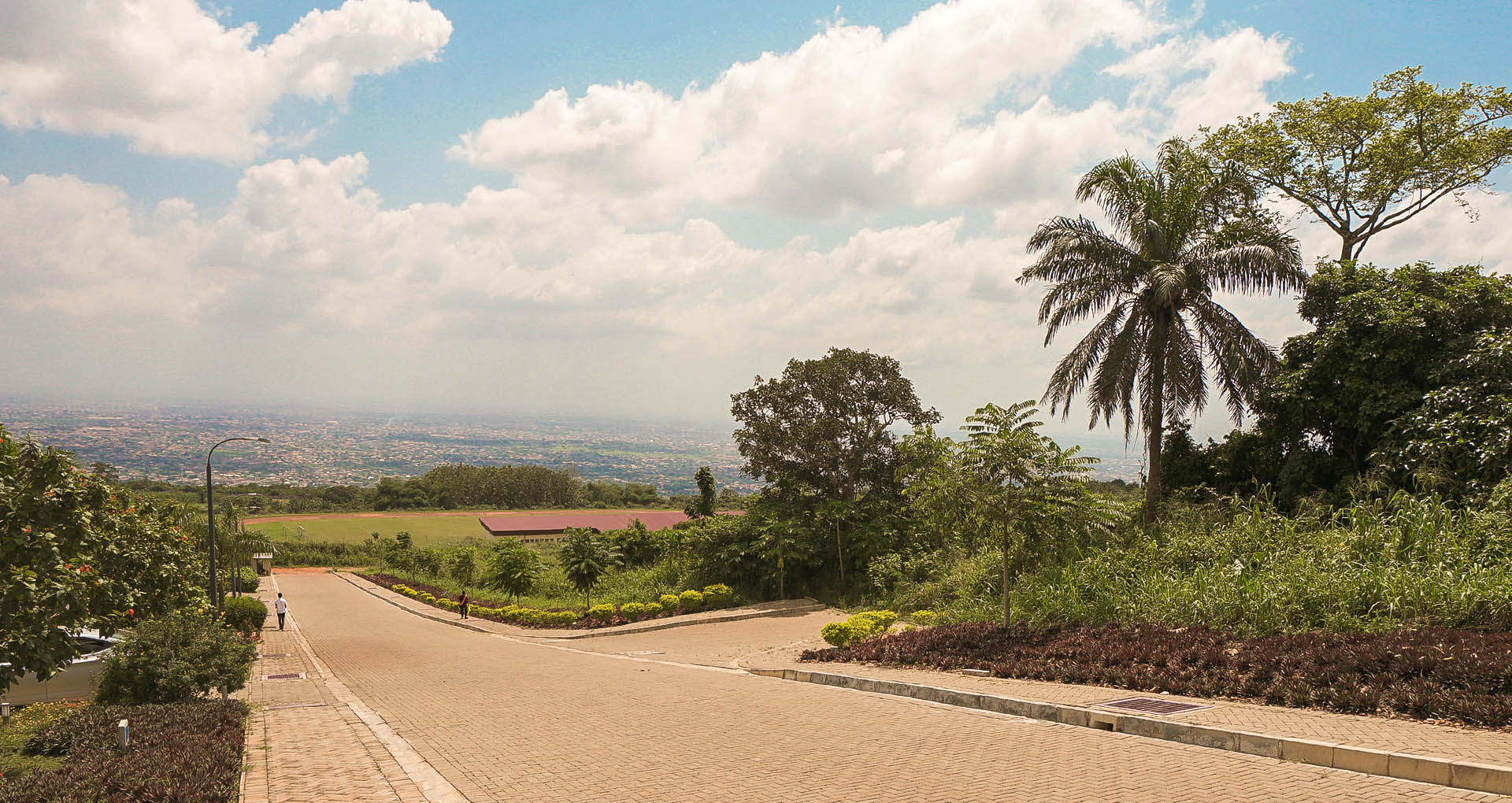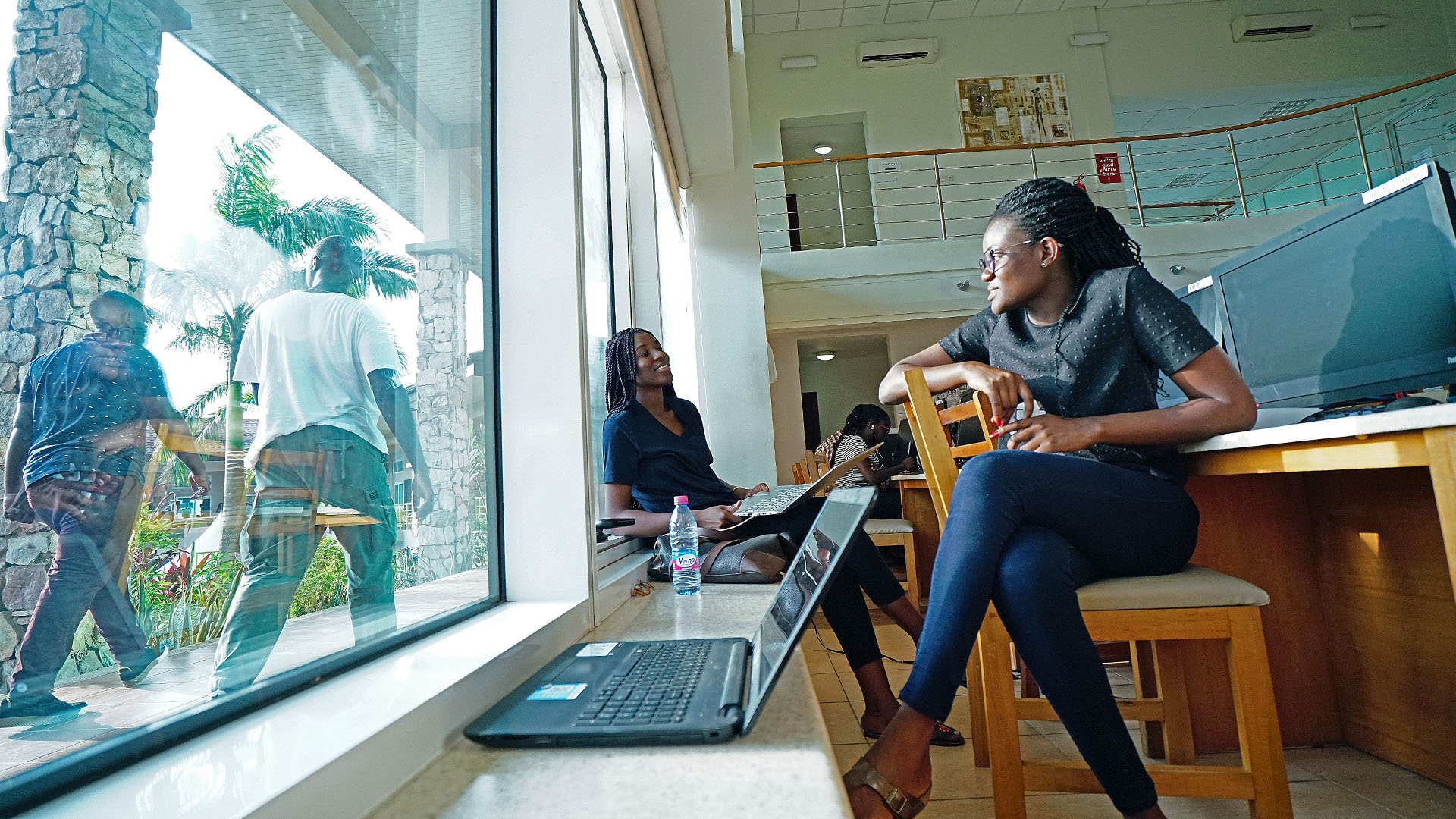Search
Search
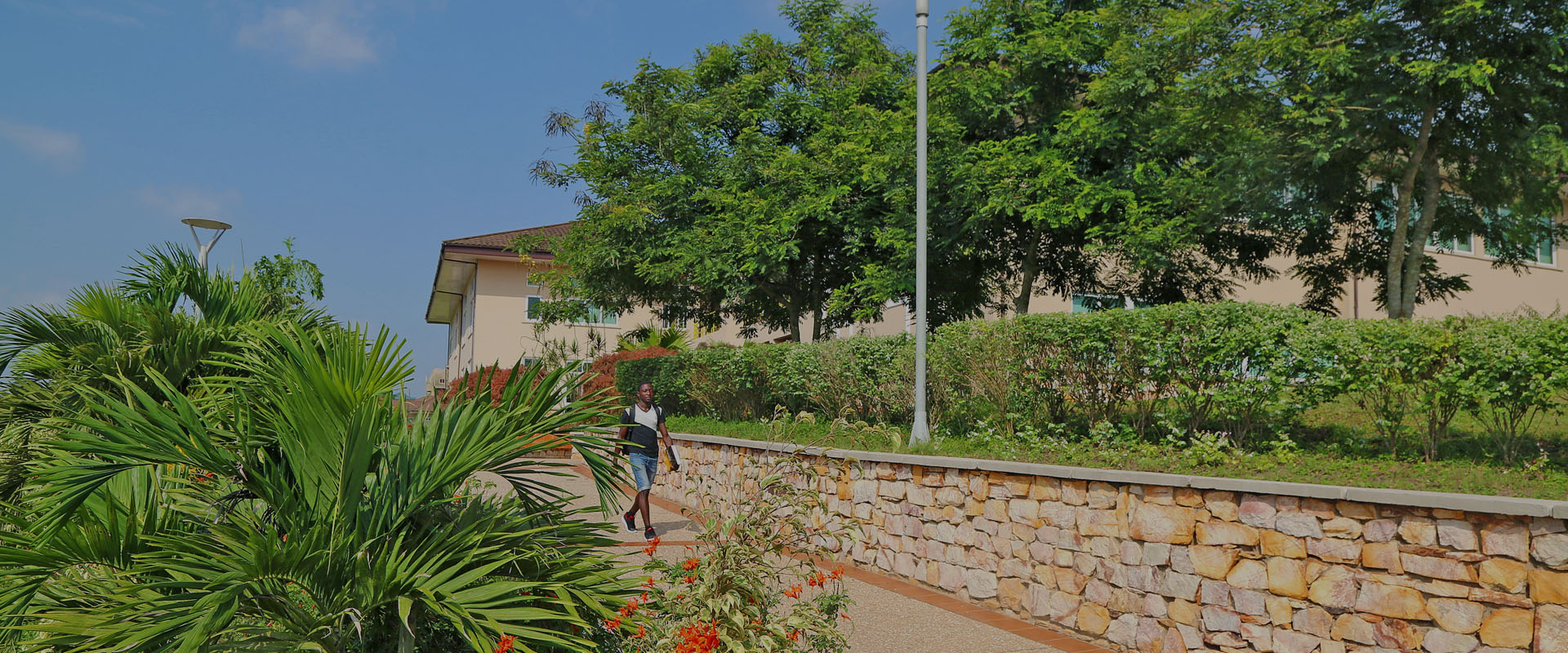
-
An 80-minute drive from Accra's airport Open or Close
An hour's drive away from Accra's airport, Ashesi's campus provides serenity away from the bustle of Accra, and is free from distractions to studies. The campus location overlooks the capital city of Accra, and on campus facilities support a varied set of learning and recreation activities for students. However, the campus is still close enough for students to travel into Accra to attend an event, or to do some quick shopping at the mall.

Ashesi's campus is about a 40 minute drive away from Accra's airport central district. Photo by Kwasiog [CC BY-SA 4.0 (https://creativecommons.org/licenses/by-sa/4.0)], from Wikimedia Commons
-
Student Housing & Recreation Open or Close
Ashesi provides housing options as part of efforts to enhance the educational experience of its students. By increasing opportunities for teamwork, enabling closer friendships and creating room for community, residential life serves as an important venue for student learning. There are eight lounge areas within the different student dorms, where students can engage in recreational activities, host events or other group activities. There are also two multi-purpose court for sports like basketball and volleyball, and our new sports centre, featuring a football field, running track, and gym, will be completed in September.

The Bliss Student Lounge at Ashesi
-
Natembea Health Centre Open or Close
The Natembea Health Centre is an on-campus facility that caters to the community's health needs. The centre ensures high quality health care service for the entire Ashesi Community through health guidance, medical treatment and prevention of disease through health education and counseling. Students who experience severe medical challenges are transported to an off-campus hospital, about 15 minutes away from campus, for treatment.

The male ward in the Natembea Health Centre
-
Environmental Sustainability Open or Close
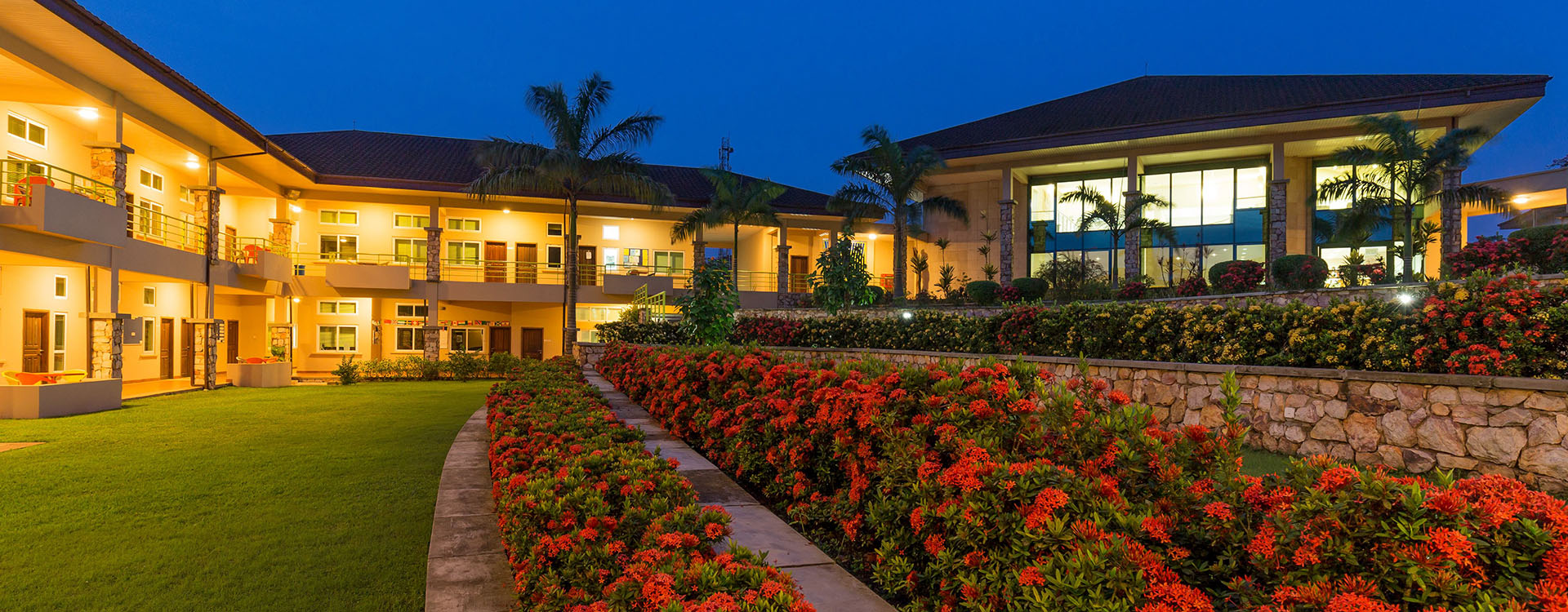
We take our commitment to protecting the environment seriously. From the very moment we started designing the buildings for our campus, we have been intentional about staying green. From the stones on our walls, to the water running through our taps, we have embraced the best environmental practices. Here is a snapshot of some of the work we are doing to make this happen.
Water
With no access to the national water supply grid, we developed plans to ensure our campus had access to clean, safe water. We started with a borehole that tapped into the springs running underneath the hills of Berekuso; to complement this, we designed our roofs to harvest rainwater, creating additional water storage across campus that currently has a capacity of over 100,000 gallons of rainwater, with plans to keep expanding. All our water sources run through a 3-phase filtration system, and are tested every month, before it runs through our taps for drinking.
We not only focus on finding sources of clean water, but also on conserving as much water as possible. In all our campus bathrooms for example, we installed efficient flush toilets that use 50% less water than the average. We also designed our biodigester system to filter out nutrient-rich effluent, which we use to water our gardens. Our water system has received great recognition, serving as a model for other institutions looking to manage water more efficiently.
Sanitation
Towards building a cleaner campus, we implemented a biodigester system that greatly reduces the volume of waste coming from Ashesi’s bathrooms. We took it a step further, using biogas created from the digestion process for powering university kitchens, and treated, nutrient-rich effluent, for watering our gardens.
Energy
All campus buildings are designed to make the most use of natural sunlight, and conserve power by reducing reliance on light bulbs. in 2017, we took a first step to using renewable energy, as 40% of our energy supply during the day was moved to solar power. Our goal is to eventually have most of our energy supply coming from solar.



